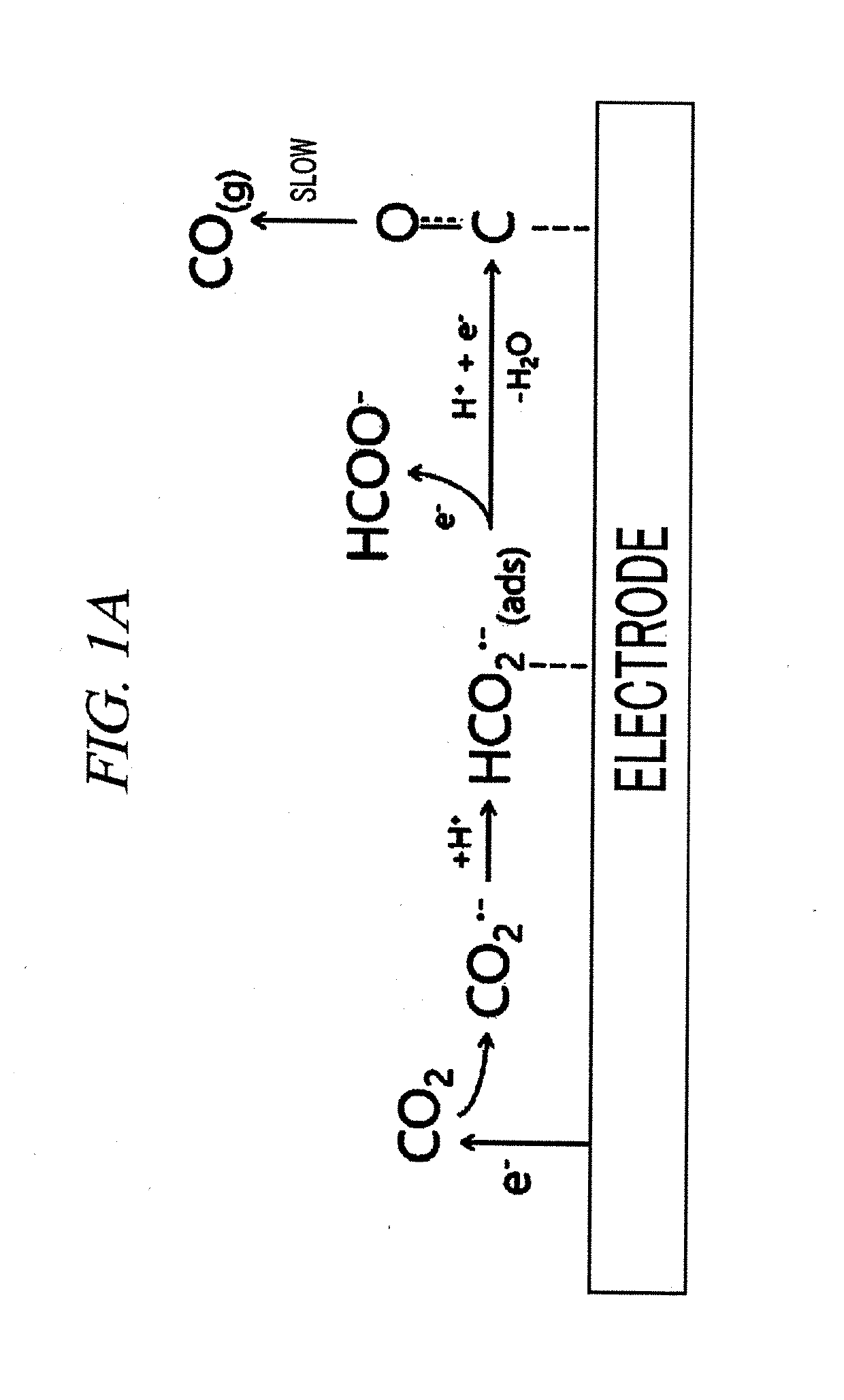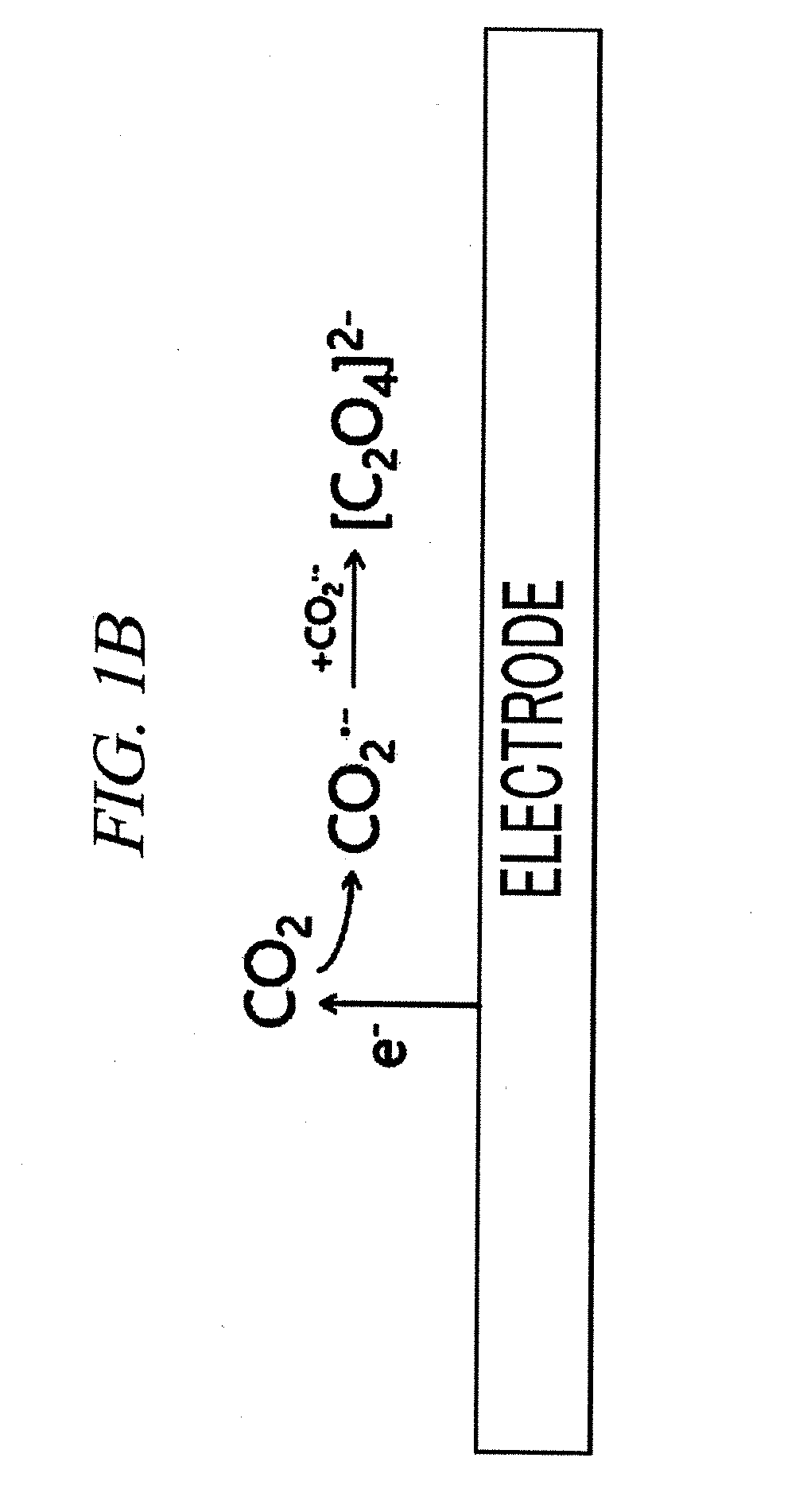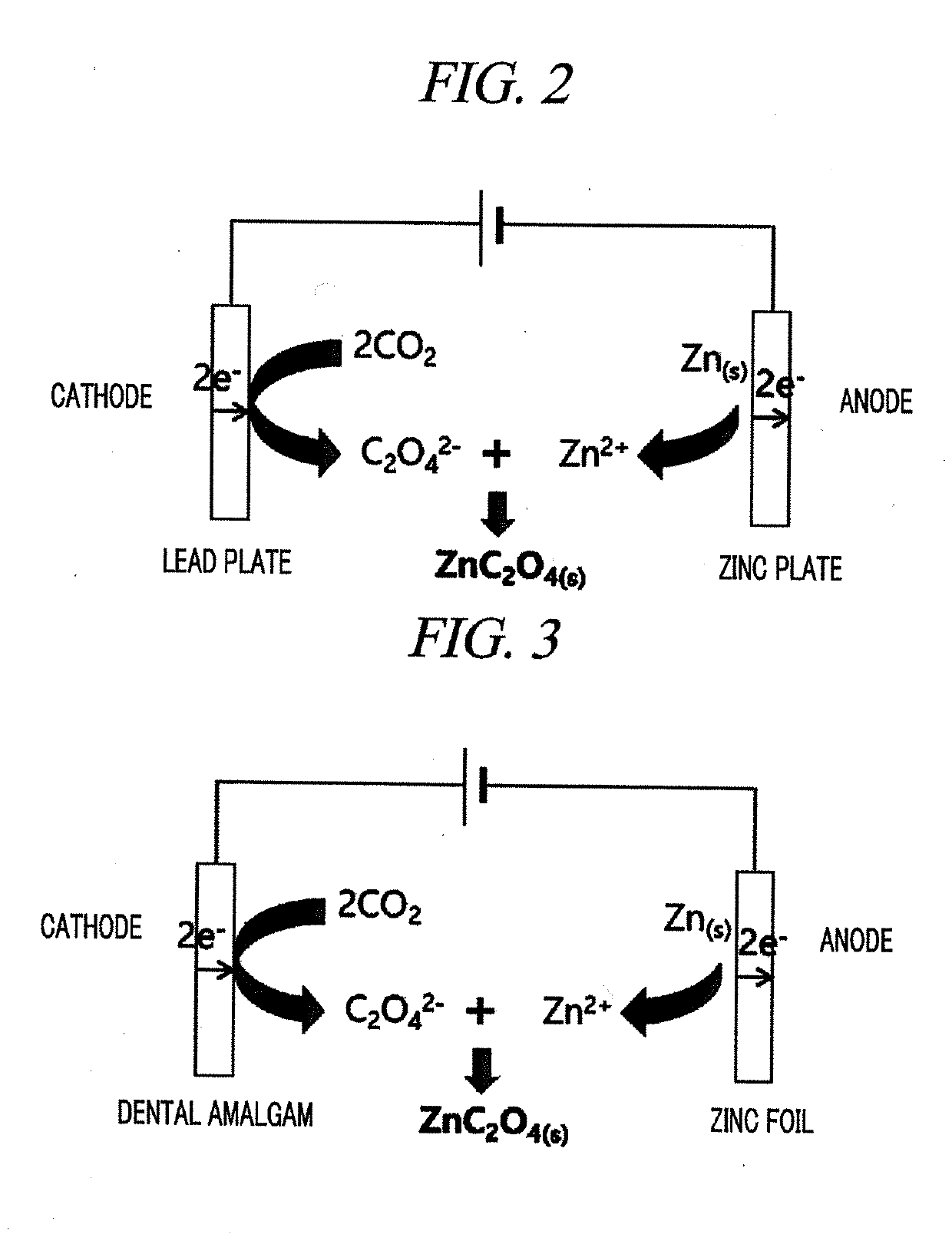System for electrochemical of carbon dioxide
a carbon dioxide and electrochemical technology, applied in the field of electrochemical conversion systems of carbon dioxide, can solve the problems of increasing device configuration costs, difficult to commercialize ccs technology, and damage to ecosystems, and achieves low production costs, low volatility, and abundant carbon resources
- Summary
- Abstract
- Description
- Claims
- Application Information
AI Technical Summary
Benefits of technology
Problems solved by technology
Method used
Image
Examples
example 1
System 1 for Reduction of Carbon Dioxide Using Aprotic Polar Organic Solvent
[0049]In the present Example, a system configured using a dental amalgam electrode as a working electrode, a sacrificial zinc anode as a counter electrode, Ag / Ag+ (each solution added with 1 mM AgClO4 in electrolyte conditions) as a reference electrode, dimethyl sulfoxide (DMSO) as a solvent, and tetrabutylammonium hexafluorophosphate (TBA.PF6) as an auxiliary electrolyte was adopted. The carbon dioxide-oxalate salt conversion system according to the present Example was as shown in FIG. 3.
[0050]Similar to a conventionally known electrolyte, 0.1 M TBAP electrolyte dissolved in acetonitrile, the electrolyte, 0.1 M TBA.PF6 dissolved in DMSO, used in the present Example stably produced an oxalate salt at room temperature. Since DMSO was almost not evaporated as compared with acetonitrile, the volatility and risk of explosion which is a problem of conventional electrolytes could be removed. Therefore, the system ...
example 2
[0062]In order to construct a tester for making a reduction reaction of CO2 in the solvent and auxiliary electrolyte conditions determined by the above-described test, a dental amalgam electrode was used as a working electrode, a sacrificial zinc anode was used as a counter electrode, and a distance between the electrodes was minimized by surrounding the counter electrode with the working electrode and an electrolyte solution was circulated uniformly using a magnetic stirrer for smooth circulation of a reactant, as shown in FIG. 6. Further, 0.1 M TBA.PF6 dissolved in DMSO was used as an electrolyte and gases (Ar and CO2) were injected into the tester during electrolysis.
PUM
| Property | Measurement | Unit |
|---|---|---|
| current density | aaaaa | aaaaa |
| aprotic polar | aaaaa | aaaaa |
| purity | aaaaa | aaaaa |
Abstract
Description
Claims
Application Information
 Login to View More
Login to View More - R&D
- Intellectual Property
- Life Sciences
- Materials
- Tech Scout
- Unparalleled Data Quality
- Higher Quality Content
- 60% Fewer Hallucinations
Browse by: Latest US Patents, China's latest patents, Technical Efficacy Thesaurus, Application Domain, Technology Topic, Popular Technical Reports.
© 2025 PatSnap. All rights reserved.Legal|Privacy policy|Modern Slavery Act Transparency Statement|Sitemap|About US| Contact US: help@patsnap.com



